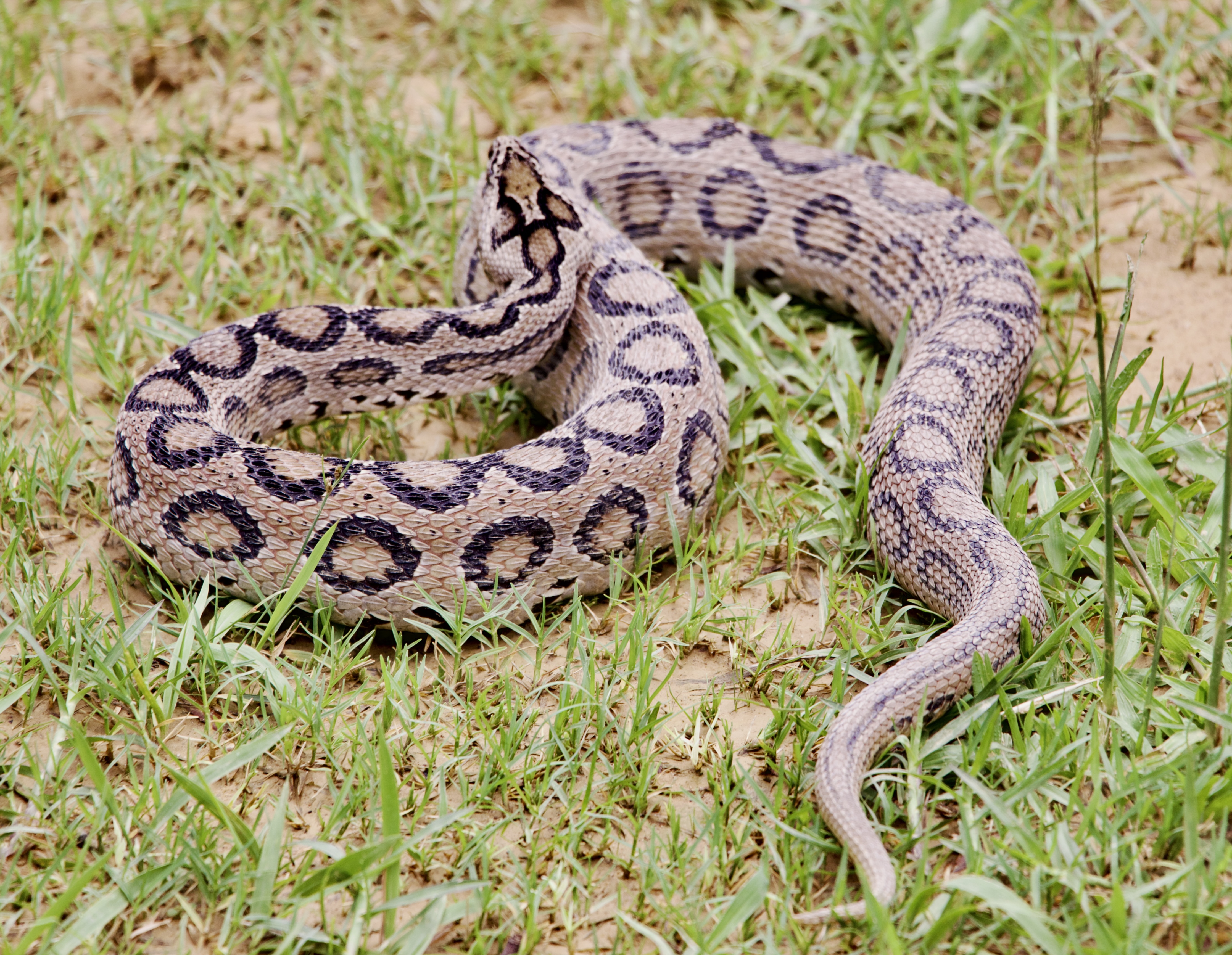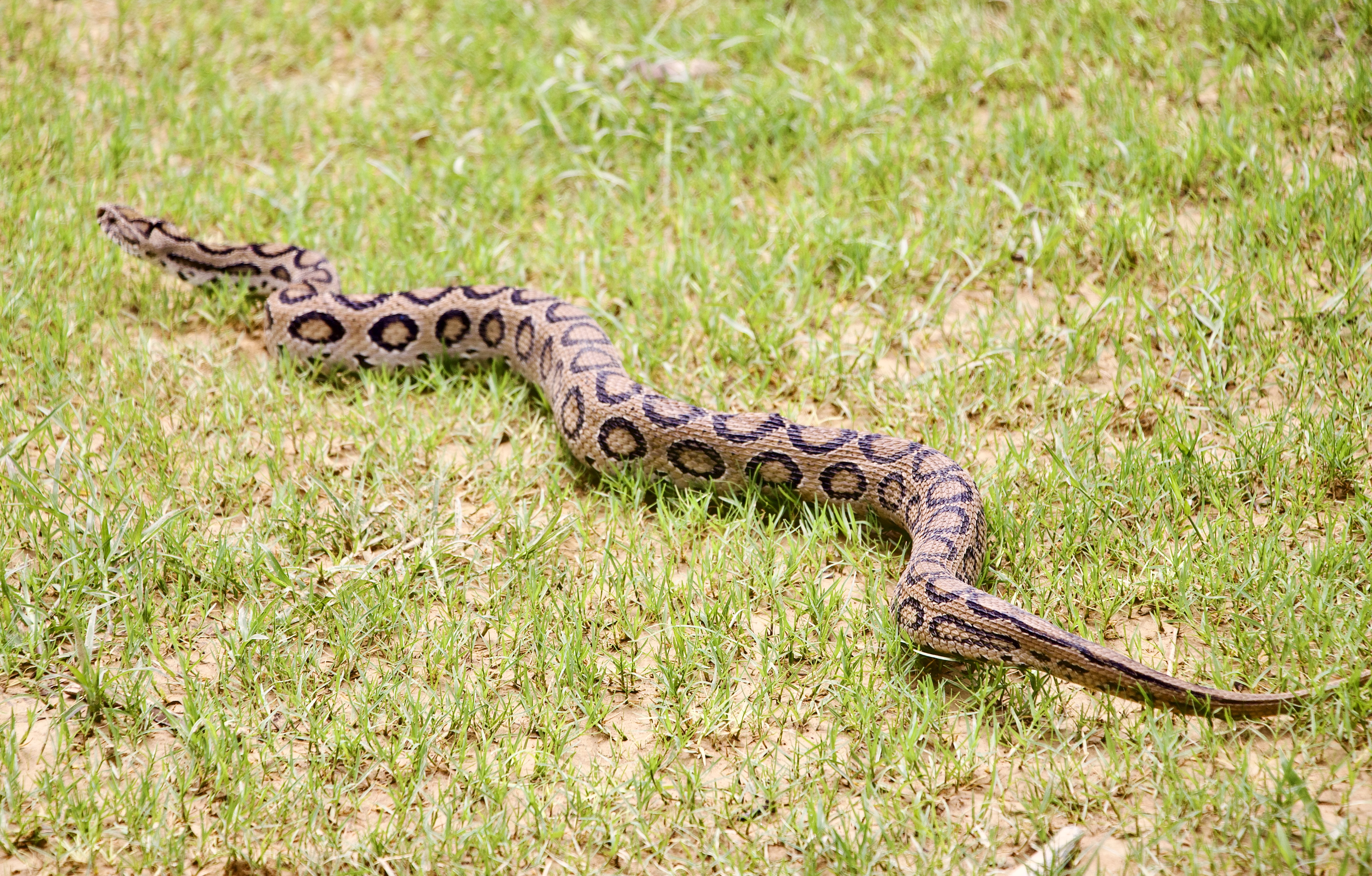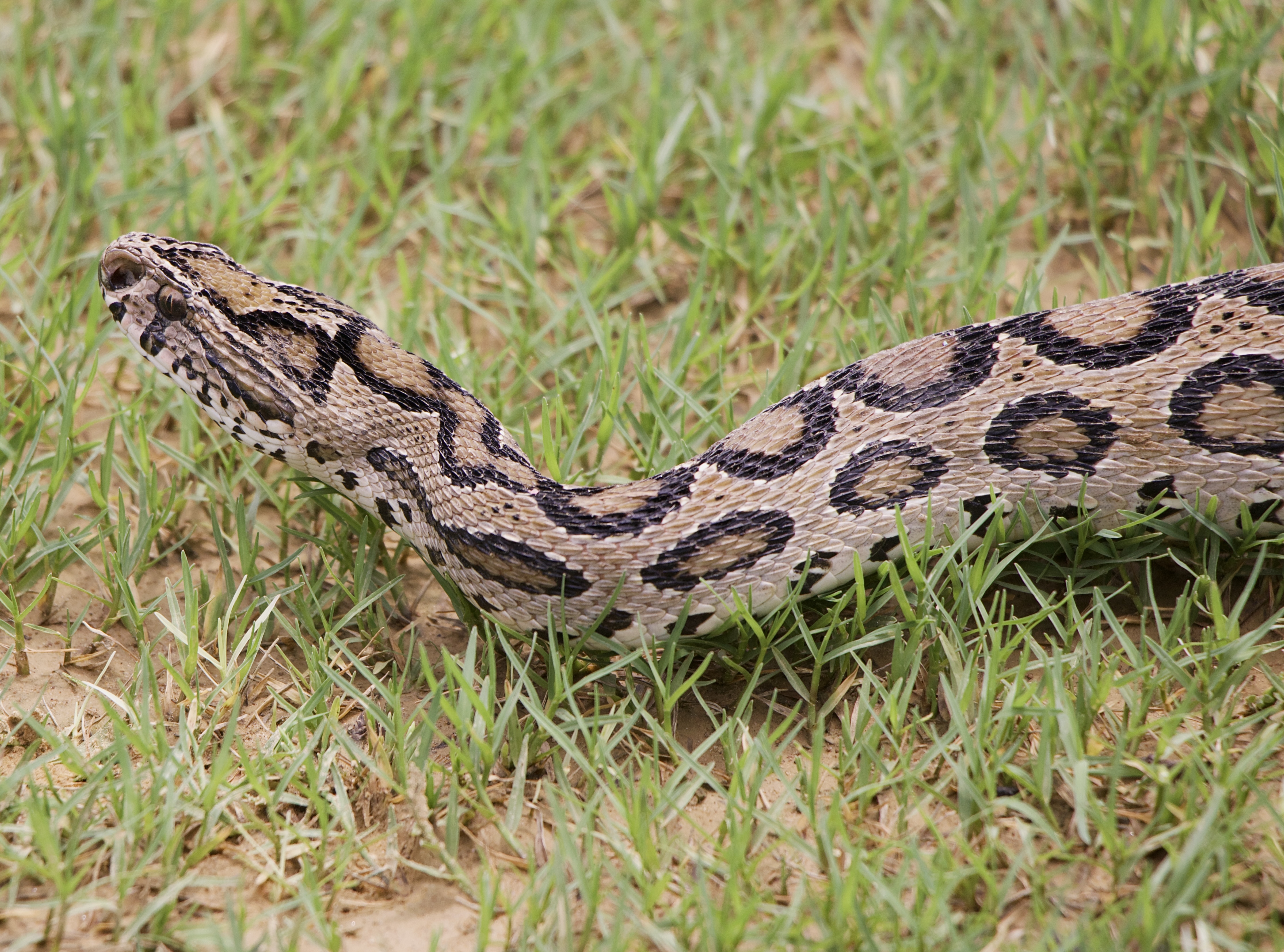
Russell’s Viper (Daboia russelii) is a true viper belonging to the Viperidae family. It is named after Patrick Russell, a Scottish herpetologist. This viper is native to South Asia. In Nepali, it is called Baghe Sarpa or Suskar.
It has a triangular head and deep yellow, tan, or brown body with three longitudinal series of dark brown spots, each surrounded by a black ring. It produces a deep and loud hissing sound when disturbed. It is found primarily in the Terai region of Nepal.
It prefers open areas, shrubby grounds, forest edges, and agricultural lands, especially rice fields, and is mostly concentrated in rural areas. A radiotelemetry study carried out in India found that Russell’s Vipers spend more time in plantations.
The same study revealed that these are least active during March and the activity increases substantially during early winter. Vipers like Himalayan Pit Viper, Tibetan Pit Viper, Mountain Pit Viper, Himalayan Habu Pit Viper, White-lipped Pit Viper, and Kramer’s Pit Viper are also present in Nepal, but Russell’s Viper is the most dangerous of all.
Russell’s Viper one of Big Four

South Asia is one of the most snakebite-prone regions of the world. High population density, widespread agriculture activities, ecology favourable to venomous snakes, settlements near the forest areas, and less adoption of preventive measures by the people are some of the major reasons behind the vulnerability of snakebites in this region.
Russell’s Viper is a leading cause of death due to snakebites in most of the South Asian countries, especially Burma and Srilanka. It is one of the big four snakes. Russell’s viper along with Common Krait, Indian Cobra, and Saw-scaled viper are referred to as ‘Big Four’ in India as these are responsible for the highest number of medically significant snakebites in the Indian subcontinent. The major snakebite victims are rice farmers in the rural areas of South Asian regions.
Research in Burma suggested that the adult Russell’s Vipers yield up to 147 mg venom whereas the juveniles yield up to 138 mg venom in the first bite. They inject about 45 per cent of their total venom content in the first bite, and the injected amount decreases in the consequent bites.
The venom of Russell’s Viper comprises powerful enzymes like metallo or serine proteinases and non-enzymes like haemorrhaging. An in-vitro study of Russell’s Viper venom showed that the whole venom exhibits trypsin inhibitory activity, phospholipase A2, adenosine monophosphatase, adenosine triphosphatase, and procoagulant activity.
The lethal dose (LD₅₀) of this venom is about 0.7 mg/kg when tested in rats. It is a dose of venom required to kill half of the rat population undergoing the tests in a specific duration.
The venom is hemotoxic and disrupts the blood clotting in the body. However, studies have shown that it can also exhibit neurotoxicity in some cases. A study has revealed that venom from Russell’s Viper clots normal blood in about 17 seconds at a 1:10,000 dilution.
The incoagulable blood leads to systemic bleeding and haemorrhage from fang marks, wounds, or any other injured parts of the body. Factor X, also called Coagulation Factor X or Stuart factor is a plasma protein synthesised by the liver in the human body that helps blood clot by participating in the middle phase of blood coagulation.
The protease present in Russell’s Viper venom reacts with Factor X and converts it into the active factor Xa which results in coagulopathy. The haemorrhage induced by coagulopathy and the action of haemorrhaging present in venom leads to the destruction of vascular walls, organ failures, and paralysis, and can be life-threatening.
A study in rats also found that Russell’s Viper Venom was found to be a potential nephrotoxin, and in high concentrations produced Acute Renal Failure (ARF) in the isolated rat kidney.
Composition of Russell’s Viper venom and more

The composition of Russell’s Viper venom along with its enzymatic activity can differ according to the geographical variations. A study in India revealed that the LD₅₀ value for most of the Viper’s venom samples from northern and western India was approximately double that of the samples from southern India. Due to this reason, the snakebite effects on the human body also may vary accordingly.
Studies from the hospital reports have found that conjunctival oedema is mainly seen in the snakebite patients of Burma, whereas acute pituitary infarction is seen in Burma and south India, and rhabdomyolysis and neurotoxicity in Sri Lanka and south India.
A study in Taiwan has shown that early antivenom treatment can restore blood coagulation in one to two days and is also effective in reducing the severity of renal dysfunction. Early recognition of Viper envenomation and early administration of antivenom is lifesaving.
Therefore the antivenom should be administered as early as possible. Antivenom used against Russell’s Viper envenoming is mostly imported in Nepal from the neighbouring countries. It is polyvalent and can also be used against Common Cobra and Common Krait.
Nepal government provides the antivenom free of cost to the snakebite victims. There are currently about 87 snakebite treatment centres in Nepal. Lack of antivenom serums in treatment centres and delayed treatment due to distant treatment centres are the major causes of multi-organ damage and mortality especially in rural areas of Nepal.
Improved diagnostic and treatment tools and advanced equipment should be made available in the hospitals and the medical professionals should be provided adequate training to operate them. The protocols related to snakebite management should be made simple and standardized. Improving access to medical services in snakebite-prone rural areas should be emphasised.
Last but not least, everyone should be made aware of the adoption of preventive measures to prevent snakebites, primary identification of venomous and non-venomous snakes, first aid treatment after snakebite, and the nearest snakebite treatment centres.
Trained and licensed rescuers with adequate tools should be employed in major snakebite-prone areas of the country. Policies should focus on the provision of free treatments to the snakebite victims till they get a full recovery. To attain this, the Nepal Government, NGOs, and INGOs should join hands and ensure safety for all.

















